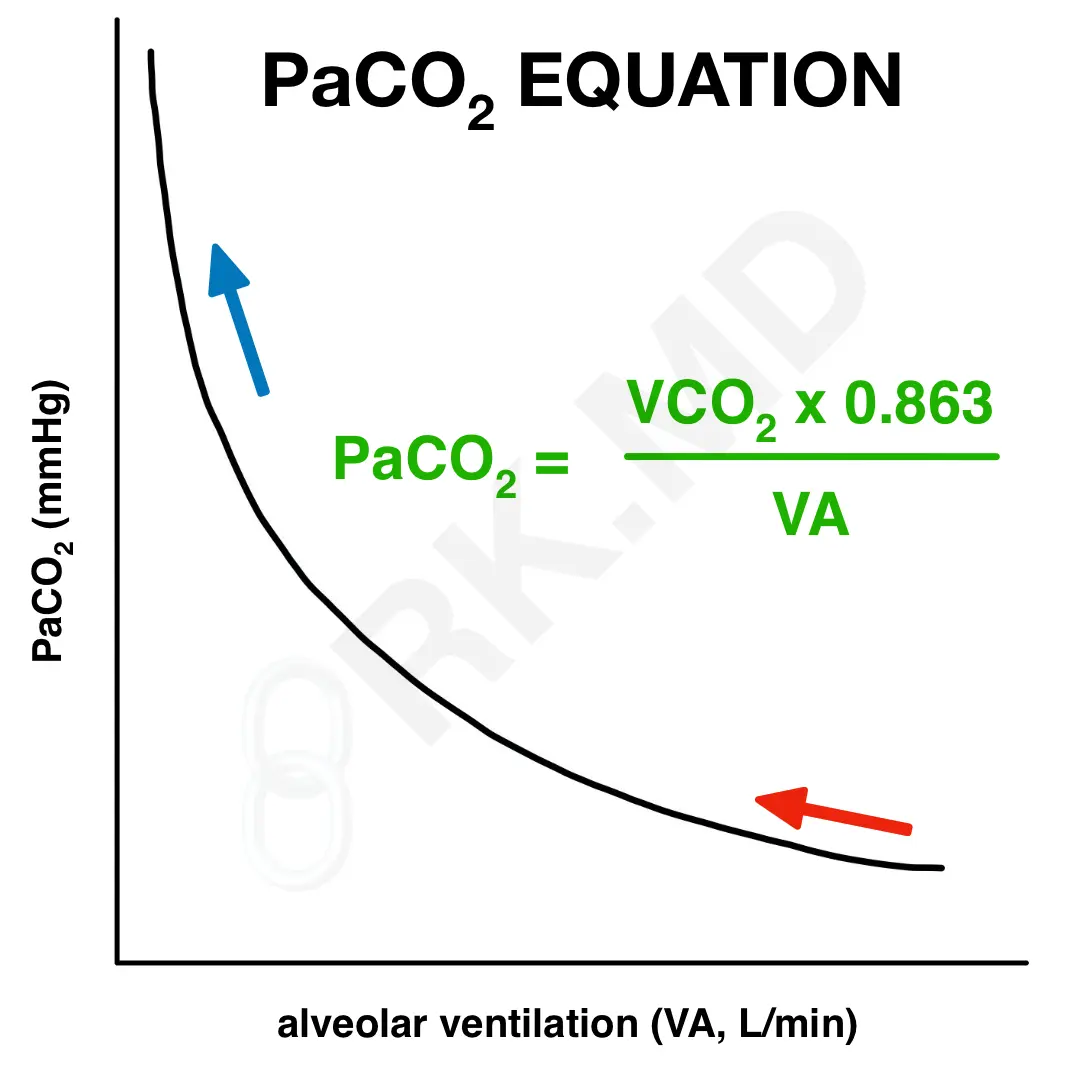I’ve previously written about the alveolar gas equation and oxygen delivery equation, both of which deal with the physiologic process of oxygenation. Now I want to discuss the important relationship between alveolar ventilation (VA), carbon dioxide production (VCO2), and alveolar carbon dioxide tension (PACO2). For this explanation, PACO2 roughly approximates arterial carbon dioxide tension (PaCO2) if ventilation/perfusion (V/Q) mismatch is minimal.
Assuming a normal PaCO2 is 35 – 45 mmHg, the equation above shows that an elevated PaCO2 (hypercapnia) results from decreased VA (respiratory depression, oversedation, muscle fatigue, or dead space ventilation). An important consideration is that increased VCO2 is handled well by an intact respiratory system. For example, your PaCO2 remains relatively stable when you exercise since your increased VCO2 during exertion is matched with an increased VA. Therefore, an increased VCO2 is not traditionally considered a cause of hypercapnia in otherwise healthy patients.
Looking at the curve, patients who are already hypercarbic (high PaCO2) and proceed to have a drop in their VA as shown by the purple arrow will have a much more significant increase in PaCO2 than if the patient has a normal PaCO2 with the same reduction in alveolar ventilation (green arrow). But, again, this is simply due to movement along the steeper portion of the curve.
Clinically, if you see a patient “panting” with rapid, deep breaths, this might NOT be hyperventilation. Instead, this might be compensation for an underlying process increasing carbon dioxide production. Therefore, sedating these patients to calm them down might be detrimental (reduce VA) and throw them into hypercarbic failure.
Hypercarbia and hypocarbia have significant physiologic implications ranging from vascular autoregulation to acid-base status, so it’s important to remember the PaCO2 equation when considering a patient’s ventilation.
Drop me a comment below with questions! 🙂







Could you please explain the derivation for this equation? Actually explain it!
Recommend reading this article.
cuales serian los valores normales de la VCO2 y de la ventilacion alveolar?
which would be the normal ranges of VCO2 and AV?